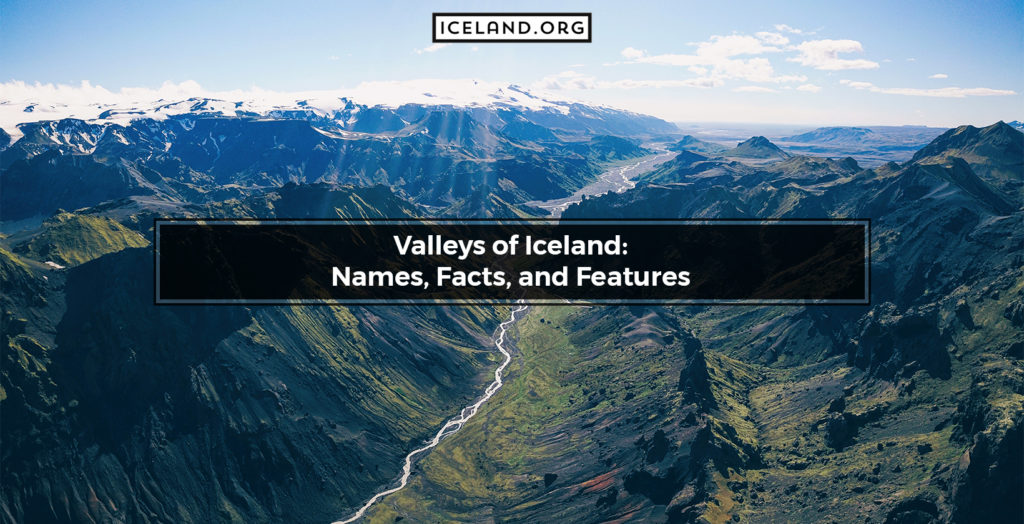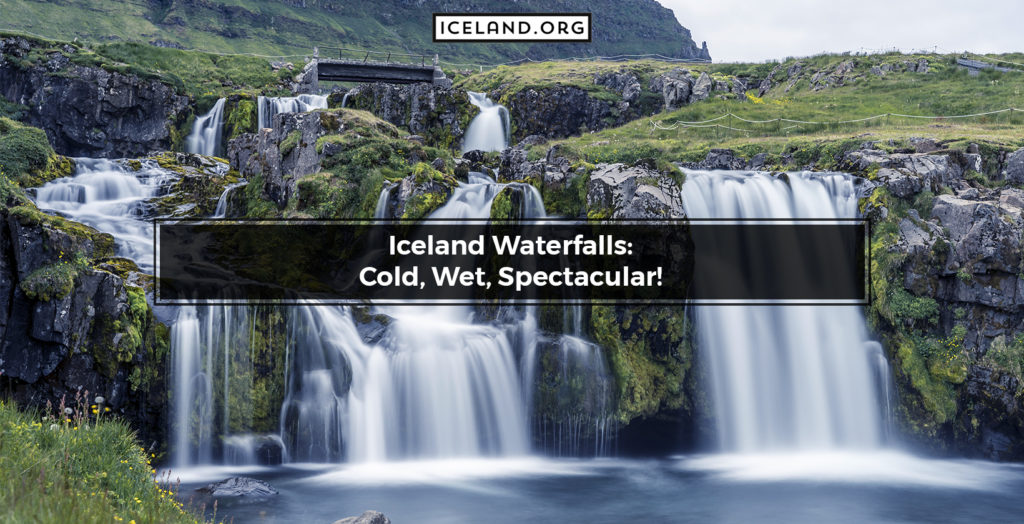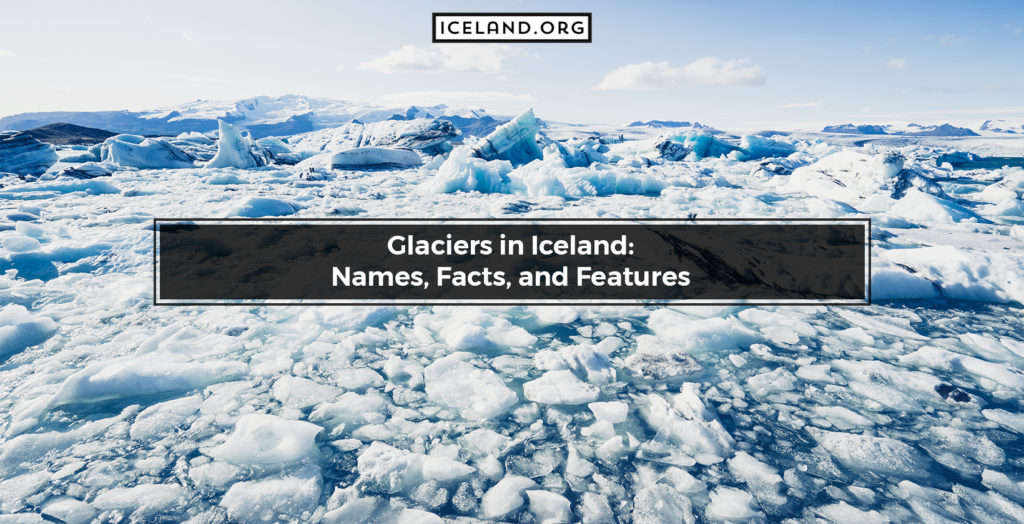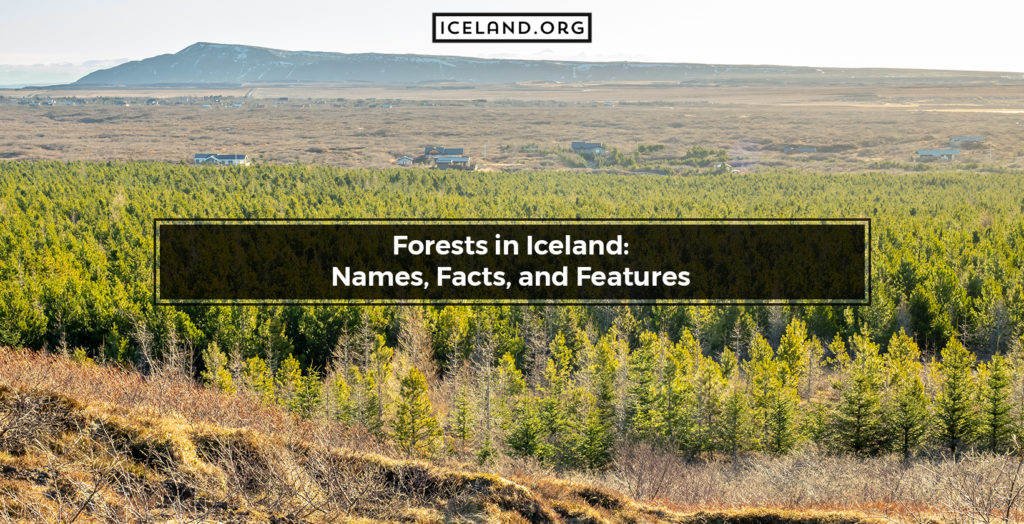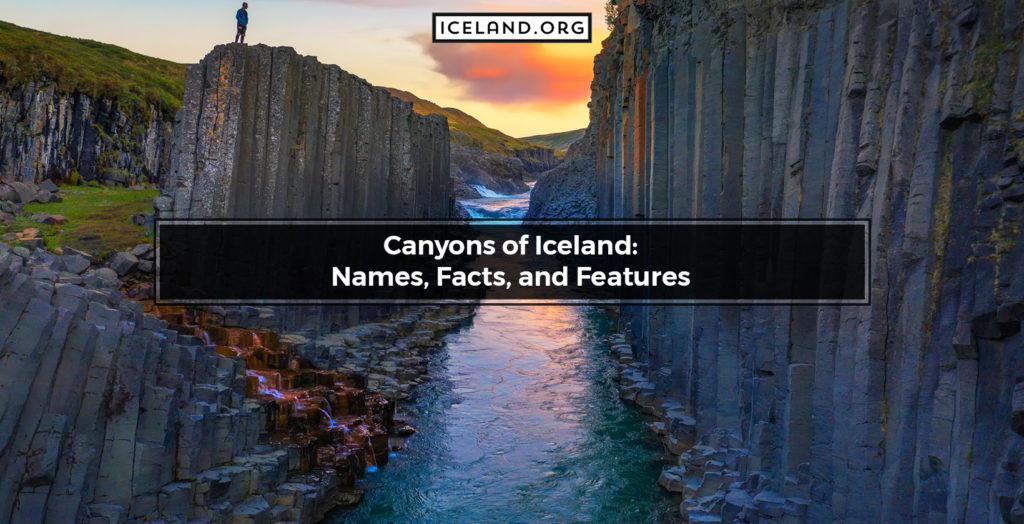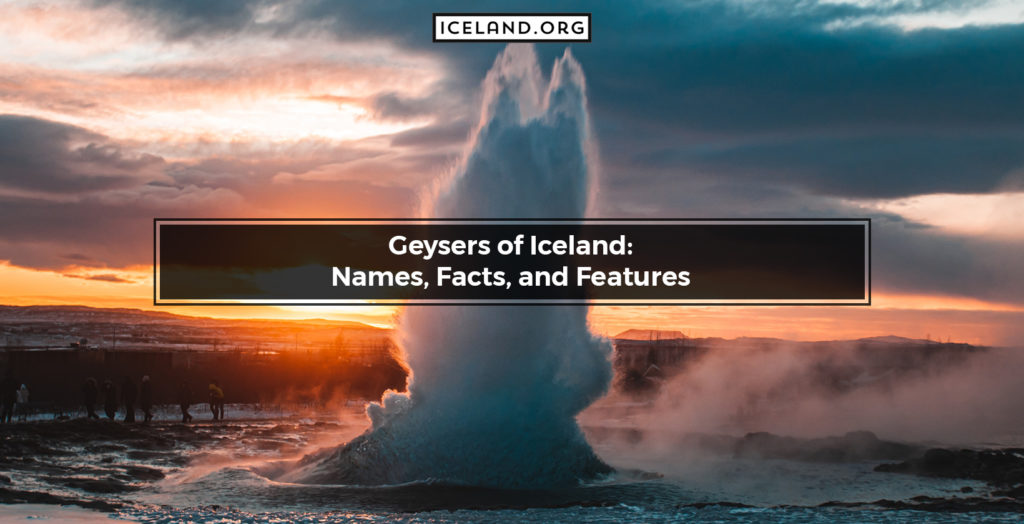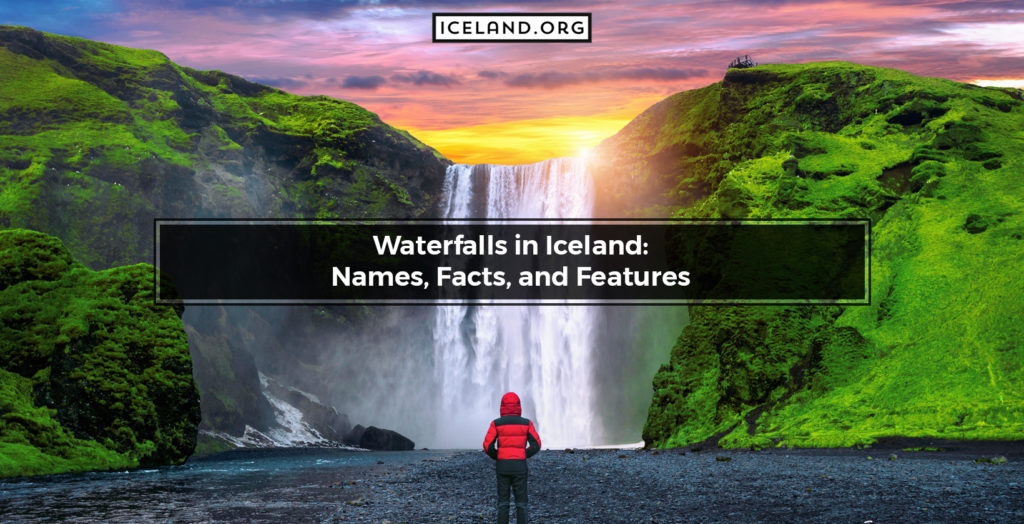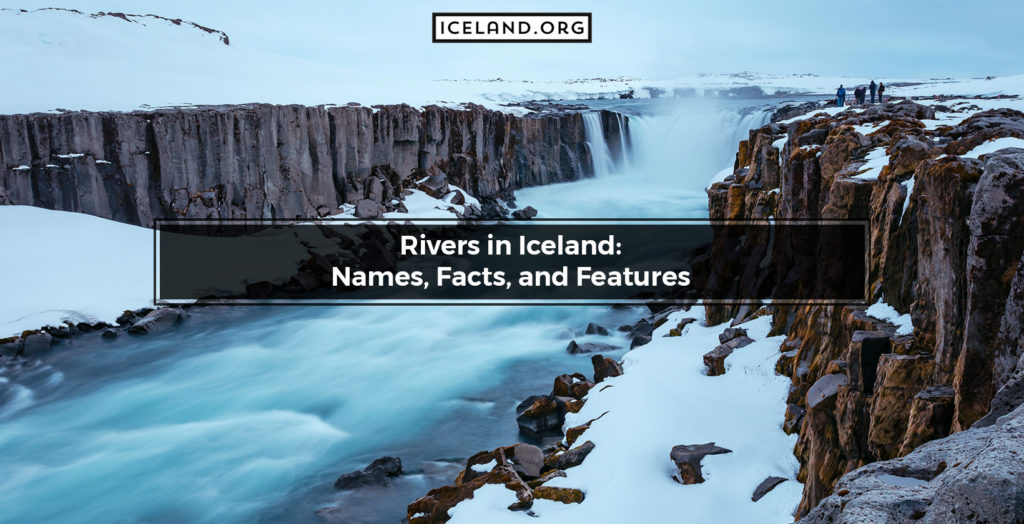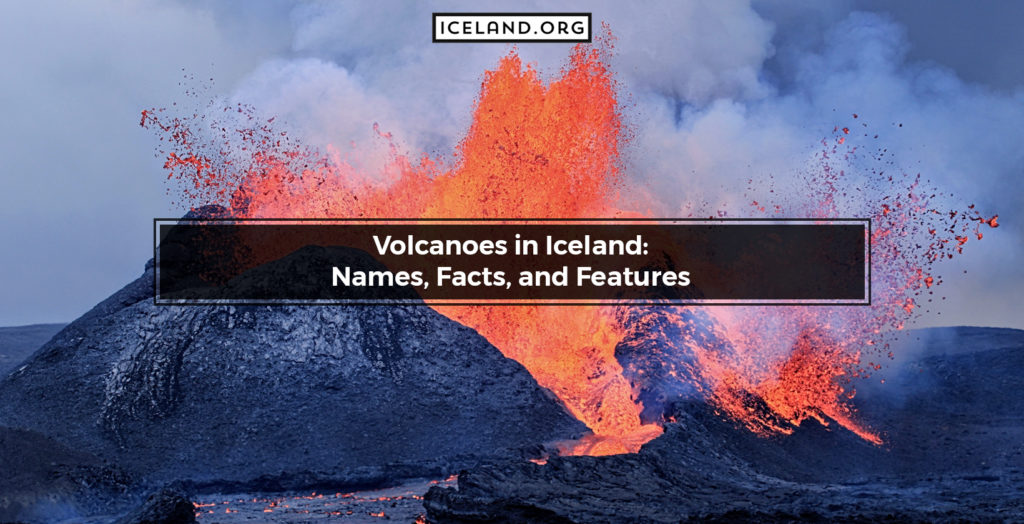Valleys are elongated, V-shaped depressions on Earth’s surface. Valleys are carved over the course of thousands of years under the forces of rivers, glaciers, lava flows. Valleys can also form where two plates meet but do not touch each other. Protected from the elements by the steep or sides, valleys have their own microclimate. In iceland, there are over 30 valleys; some are steep and short while others are broad and long. Considering the high number of rivers and volcanoes, it is no surprise that Iceland has so many valleys. The most famous valley in Iceland is Thórsmörk. Located in the southwest of the country, the Thórsmörk Valley is a picturesque landscape portraying Iceland’s contrasting natural attractions and landforms.
Here is a list of the Valleys of Iceland:
- Aðaldalur
- Breiðdalur
- Fagridalur
- Flateyjardalur (33 kilometers)
- Fljótsdalur
- Fnjóskadalur
- Haukadalur
- Hjaltadalur
- Hofsárdalur
- Hrafnkelsdalur
- Hörgárdalur (30 kilometers)
- Jökuldalur
- Mosfellsdalur
- Mýrdalur
- Norðurárdalur
- Reykjadalur
- Selárdalur
- Skorradalur
- Svarfaðardalur
- Svínadalur
- Vesturárdalur
- Þjórsárdalur
- Öxnadalur
- Asbyrgi
- Gjáin
- Herjólfsdalur
- Glerardalur Valley
- Thorsmork
- Hvannadalshnjúkur.
1. Aðaldalur
Aðaldalur Valley (Main Valley) in Iceland is located in the north. The Aðaldalur Valley’s coordinates are 65.8542° N, 17.4026° W. Aðaldalur is a broad lowland that lies between the Skjálfandafljót River and the Hvammsheiði moor. Aðaldalur includes the 100 square kilometers Aðaldalshraun lava field marked by strangely shaped lava formations and unusually dense vegetation like heather, rice, birch, and oak. At the borders of the lava field, there are several farms and settlements drawing heat and power from the local geothermal sources. Tours and Tour Guides for the Aðaldalur Valley in Iceland are available. Visitors can enjoy daily activities while staying in the nice hotels in the Aðaldalur Valley.
2. Breiðdalur
Breiðdalur Valley (Wide Valley) in Iceland is located in the east. The Breiðdalur Valley’s coordinates are 63.9713°N, 63.9713° W. As the largest valley in the Eastfjords, Breiðdalur houses the salmon-rich Breiðdalsá river and a young fishing village called Breiðdalsvík. Breiðdalur separates the Kleifarháls Mountain into two valleys, Norðurdalur and Suðurdalur. The grassy countryside of Breiðdalur is ideal for sheep farming. Tours and Tour Guides for the Breiðdalur Valley in Iceland are available.
3. Fagridalur
Fagridalur Valley in Iceland is located in the east. The Fagridalur Valley’s coordinates are 64.7625°N, 14.2454°W. Along the Fagridalur Valley lies the main route from Egilsstaðir to Reyðarfjörður. The Fagridalur Valley itself lies south of Fossdalur Valley and west of the 512-meters high Skúta peak. Tours and Tour Guides for the Fagridalur Valley in Iceland are available.
4. Flateyjardalur
Flateyjardalur Valley in Iceland is located in the north. The Flateyjardalur Valley’s coordinates are 66.0745° N, 17.8756° W. Flateyjardalur is 33 kilometers long and has almost perfect north to south direction. Flateyjardalur is situated on the Flateyjarskagi peninsula by the Skjálfandi bay. Flateyjardalur is named after the popular Flatey Island that lies just across the valley. Tours and Tour Guides for the Flateyjardalur Valley in Iceland are available. In the past, Flateyjardalur was inhabited; today, the only three concrete houses in the valley host visitors, which are particularly common in the summer months.
5. Fljótsdalur
Fljótsdalur Valley in Iceland is located in the eastern parts of the country. The Fljótsdalur Valley’s coordinates are 64.8277° N, 15.5022° W. Formed by the Lagarfljót River, Fljótsdalur houses the city of Egilsstaðir and the 112-meters deep Lake Lagarfljót. In the Fljótsdalur Valley, there are three beautiful waterfalls Hengifoss, Strútsfoss, and Kirkjufoss. Tours and Tour Guides for the Fljótsdalur Valley in Iceland are available. Hikes to the Hengifoss Waterfall are the most popular activity in Fljótsdalur.
6. Fnjóskadalur
Fnjóskadalur Valley in Iceland is located in the northeast. The Fnjóskadalur Valley’s coordinates are 65.6958° N, 17.8863° W. the main feature of the Fnjóskadalur Valley is the Fnjóská River. Rising from Sprengisandur in the Icelandic Highlands, Fnjóská is a well-known salmon-angling river and also the longest spring-fed river in the country. In the center of Fnjóskadalur lies Vaglaskógur, which is Iceland’s second-largest forest. Tours and Tour Guides for the Fnjóskadalur Valley in Iceland are available. At a distance of 10 kilometers northeast of Akureyri, Fnjóskadalur is a popular destination for tourists.
7. Haukadalur
Haukadalur Valley (Hawk Dale or Valley of Hawks) is located in the southwest. The Haukadalur Valley’s coordinates are 64.3140° N, 20.3056° W. Haukadalur is a rich geothermal area including over 40 geysers, hot springs, fumaroles, and mud pots. The most prominent geysers in Haukadalur are Strokkur and Geysir, which are also the largest geysers in the country. Tours and Tour Guides for the Haukadalur Valley in Iceland are available. In fact, together with the Gullfoss Waterfall and the Þingvellir National Park, Haukadalur is part of Iceland’s famous Golden Circle Tour.
8. Hjaltadalur
Hjaltadalur Valley in Iceland is located in the north. The Hjaltadalur Valley’s coordinates are 65.7311° N, 19.1300° W. The main attraction in Hjaltadalur is the Holar village. Holar is an ancient bishop seat and features one of the most beautiful churches in Iceland. It is also where the main campus of Holar University College is located. Tours and Tour Guides for the Hjaltadalur Valley in Iceland are available.
9. Hofsárdalur
Hofsárdalur Valley in Iceland is located in the east. The Hofsárdalur Valley’s coordinates are 65.6667° N, 15.000° W. Hofsárdalur is the biggest and westernmost valley of the Vopnafjörður group. Hofsárdalur cradles the Hofsá River and is surrounded by a low ridge in the east and the high Smjörfjöll Mountains in the west. Hofsárdalur is grass-covered and very fertile farming land. Tours and Tour Guides for the Hofsárdalur Valley in Iceland are available.
10. Hrafnkelsdalur
Hrafnkelsdalur Valley in Iceland is located in the east. The Hrafnkelsdalur Valley’s coordinates are 65.0248° N, 15.5533° W. Hrafnkelsdalur is a long and broadside valley of Jökuldalur. Hrafnkelsdalur is grassy, with lots of bushes and several scattered geothermal areas. Today, there are two farms in the valley, Vaðbrekka and Aðalból. Tours and Tour Guides for the Hrafnkelsdalur Valley in Iceland are available.
11. Hörgárdalur
Hörgárdalur Valley in Iceland is located in the north. The Hörgárdalur Valley’s coordinates are 65.6048° N, 18.6088° W. Hörgárdalur is 30 kilometers long and cradles the Hörgá River. Hörgárdalur is wide and fertile at its mouth and then turns into a narrow land surrounded by high hills and mountains. The Drangafjall Ridge divides the Hörgárdalur Valley from Öxnadalur The oldest farm in the valley is Flögusel. Tours and Tour Guides for the Hörgárdalur Valley in Iceland are available.
12. Jökuldalur
Jökuldalur Valley (Glacier Valley) in Iceland is located in the east. The Jökuldalur Valley’s coordinates are 65.3097° N, 15.1197° W. The impressive Jökuldalur Valley is marked by two things, the best sheep farms in the country and the Stuðlagil Canyon. Cradled within Jökuldalur, the Stuðlagil Canyon is the largest formation of basalt rock columns. Tours and Tour Guides for the Jökuldalur Valley in Iceland are available. The most popular activity in Jökuldalur is Stuðlagil Canyon hikes which require physical preparedness.
13. Mosfellsdalur
Mosfellsdalur Valley in Iceland is located in the southwest. The Mosfellsdalur Valley’s coordinates are 64.1810° N, 21.5966° W. Mosfellsdalur is a lush and picturesque lowland. The Helgufoss Waterfall is situated in the valley. Tours and Tour Guides for the Mosfellsdalur Valley in Iceland are available. Being only 20 kilometers away from Reykjavik, Mosfellsdalur is a popular self-drive destination for tourists and locals looking for a countryside getaway.
14. Mýrdalur
Mýrdalur Valley (Boggy Valley) in Iceland is located in the west. The Mýrdalur Valley’s coordinates are 65.2167° N, 21.3000° W. Situated between two outwash plains called Solheimasandur and Myrdalssandur, Mýrdalur is the greenest spot in Iceland. The main geographic features of the Mýrdalur Valley are the rugged canyons, gullies, and Myrdalsjokull as the country’s fourth-largest glacier. Tours and Tour Guides for the Mýrdalur Valley in Iceland are available.
15. Norðurárdalur
Norðurárdalur Valley in Iceland is located in the north. The Norðurárdalur Valley’s coordinates are 64.9744° N, 21.8206° W. Norðurárdalur is a side-valley situated at the mouth of the much larger Laxárdalur Valley. Tours and Tour Guides for the Norðurárdalur Valley in Iceland are available.
16. Reykjadalur
Reykjadalur Valley (Steam Valley) in Iceland is located in the south. The Reykjadalur Valley’s coordinates are 64.0476° N, 21.2222° W. Reykjadalur got its name after its geothermal landforms like mud poles, hot springs, and hot bathing river. The Djúpagil canyon and Djúpagilsfoss waterfall are situated in the valley. Reykjadalur is part of the Hengill area, and despite the fact that Hengill last erupted 2000 years ago, it is still considered to be active. Tours and Tour Guides for the Reykjadalur Valley in Iceland are available.
17. Selárdalur
Selárdalur Valley in Iceland is located in the eastern parts. The Selárdalur Valley’s coordinates are 64.7500° N, 15.0000° W. The small and isolated Selárdalur Valley is situated between Þvergil on the east and Öxarhraun on the west. Tours and Tour Guides for the Selárdalur Valley in Iceland are available. Selárdalur has turned into an open art museum thanks to the work of an Icelandic artist named Samuel Jonsson.
18. Skorradalur
Skorradalur Valley in Iceland is located in the southwest. The Skorradalur Valley’s coordinates are 64.50500° N 21.46472° W. The Skorradalur Valley is the southernmost valley in Borgarfjörður. Almost the entire valley is filled with Skorradalur Lake, and the rest are moorlands. Tours and Tour Guides for the Skorradalur Valley in Iceland are available. Skorradalur is a popular tourist destination, and each year the number of summerhouses in the valley increases.
19. Svarfaðardalur
Svarfaðardalur Valley in Iceland is located in the north. The Svarfaðardalur Valley’s coordinates are 65.8631° N, 18.6884° W. Svarfaðardalur is a large valley cradling the Svarfaðardalsá River. Tours and Tour Guides for the Svarfaðardalur Valley in Iceland are available. Today, Svarfaðardalur is part of the Dalvíkurbyggð municipality, whose main village has 1400 inhabitants and is popular among tourists.
20. Svínadalur
Svínadalur Valley in Iceland is located in the northwest. The Svínadalur Valley’s coordinates are 65.5131° N, 20.0803° W. Svínadalur sits above the Ferstikluháls Ridge. In Svínadalur, there are three large lakes, Eyrarvatn (which gives birth to the Laxá River), Þórisstaðavatn, and Draghálsvatn. All three lakes are rich in trout and represent popular fishing destinations for both locals and tourists. Tours and Tour Guides for the Svínadalur Valley in Iceland are available.
21. Vesturárdalur
Vesturárdalur Valley in Iceland is located in the north. The Vesturárdalur Valley’s coordinates are 65.7436° N, 18.7417° W. Vesturárdalur is best known for its unusual and beautiful rock formations. The most popular rock formation in the valley is at Hljóðaklettar. Vesturárdalur lies between the horseshoe-shaped depression Ásbyrgi and Europe’s strongest Dettifoss waterfall. Tours and Tour Guides for the Vesturárdalur Valley in Iceland are available. Vesturárdalur is part of the famous Diamond Circle.
22. Þjórsárdalur
Þjórsárdalur Valley in Iceland is located in the southwest. The Þjórsárdalur Valley’s coordinates are 64.1056° N, 19.8985° W. Þjórsárdalur lies between mount Búrfell and mount Skriðufell and is divided into two distinct valley floors, Rauðukamba in the east and Bergólfsstaðaá in the west. The flattened and pumice Þjórsárdalur Valley is home to Iceland’s longest river, the 230-kilometers long Þjórsá River. Popular landmarks in Þjórsárdalur include the Viking era farmstead Þjóðveldisbærinn Stöng, the waterfall-riddled small valley of Gjáin, and Háifoss is the fourth tallest waterfall in the country. Tours and Tour Guides for the Þjórsárdalur Valley in Iceland are available. In fact, Þjórsárdalur is a not-to-be-missed destination among tourists because of the many attractions.
23. Öxnadalur
Öxnadalur Valley in Iceland is located in the north. The Öxnadalur Valley’s coordinates are 65.5702° N, 18.5500° W. Öxnadalur lies in the large Eyjafjordur Fjord. The most prominent landmarks of Öxnadalur are Hraun’s knife-edged peaks made of lava. Tours and Tour Guides for the Öxnadalur Valley in Iceland are available. The Öxnadalur Valley, or more precisely its Hraun Farm, is the birthplace of one of Iceland’s most beloved poets, Jonas Hallgrimsson.
24. Asbyrgi
Asbyrgi Valley (Shelter of the Gods) in Iceland is located in the northeast of the country. The Asbyrgi Valley’s coordinates are 66.0178° N, 16.5055° W. Asbyrgi is a horseshoe-shaped depression featuring a glacial canyon and spectacular small valley. It is believed that Asbyrgi formed when Odin’s eight-legged flying horse named Sleipnir left its hoof print. Tours and Tour Guides for the Asbyrgi Valley in Iceland are available. Asbyrgi is part of the famous Diamond Circle. Well-known for the rich Norse folklore, today, the Asbyrgi valley offers many hiking trails and camping grounds.
25. Gjáin
Gjáin Valley in Iceland is located in the south. The Gjáin Valley’s coordinates are 64.1492° N, 19.7380° W. Gjáin is, in fact, an oasis of waterfalls and lush vegetation at the uppermost section of the Þjórsárdalur Valley. Gjáin is a breathtakingly beautiful place and is often called one of Iceland’s natural pearls. The three main landforms in the Gjáin Valley are powerful waterfalls, crystal-clear pools, and volcanic basalt cliffs. The Rauðá River (Red River) and her cascading Gjárfoss Waterfall are the main attractions. Tours and Tour Guides for the Gjáin Valley in Iceland are available.
26. Herjólfsdalur
Herjólfsdalur Valley in Iceland is located in the south. The Herjólfsdalur Valley’s coordinates are 64.1356° N, 21.7797° W. Herjólfsdalur is named after the first settler in the area, Herjólfur Bárðarson, who built a farm there. The Daltjörn lake is found in the valley. Herjólfsdalur harbors the main campsite of the populated Heimaey Island. Tours and Tour Guides for the Herjólfsdalur Valley in Iceland are available.
27. Glerardalur Valley
Glerardalur Valley in Iceland is located in the north. The Glerardalur Valley’s coordinates are 65.6148° N, 18.2494° W. Glerardalur Valley is marked by some of the highest peaks in north Iceland and many small glaciers. Tours and Tour Guides for the Glerardalur Valley Iceland are available. There are many popular hiking trails in Glerardalur.
28. Thorsmork
Thorsmork Valley in Iceland (Valley of Thor) is located in the southwest. The Thorsmork Valley’s coordinates are 63.6807° N, 19.4826° W. Situated between the Tindfjallajökull and Eyjafjallajökull glaciers, Thorsmork is a remote yet stunningly picturesque valley. Popular sites in Thorsmork are the Krossá River, Seljalandsfoss waterfall, and Landmannalaugar Nature Reserve. Tours and Tour Guides for the Thorsmork Valley in Iceland are available. Thorsmork is perfect for people wanting to escape the city and enjoy nature.
29. Hvannadalshnjúkur
Hvannadalshnjúkur Valley in Iceland is located in the southern parts of the island. The Hvannadalshnjúkur Valley’s coordinates are 64.0147° N, 16.6749° W. Hvannadalshnjúkur lies in the Vatnajökull National Park at the northwestern rim of the Öræfajökull volcano’s crater. Tours and Tour Guides for Hvannadalshnjúkur in Iceland are available. The climb to the Hvannadalshnjúkur Valley is challenging and requires physical preparation as well as professional guides.
What are the facts about Valleys in Iceland?
In Iceland, there are over 30 named valleys. Some of them are very big and represent a landform on their own, while others play the role of smaller, so-called side-valleys. All Icelandic valleys are close to other natural attractions such as volcanoes, lava fields, waterfalls, hot springs, etc. Plus, many valleys are fertile and good farming grounds, thus leading to the development of small settlements like villages. Some of the settlements are inhabited year-round, while others only during summer seasons.
What is the highest Valley in Iceland?
The highest valley in Iceland is Hvannadalshnjúkur. Hvannadalshnjúkur is, in fact, a pyramidal peak situated on the northwestern rim of the Öræfajökull volcano in Iceland’s Vatnajökull National Park. The climb for Hvannadalshnjúkur is complicated, with many hidden crevasses.
What are the Rivers that are in Valleys in Iceland?
Many of the Important rivers in Iceland are settled into their own valleys. The presence of flowing water impacts the overall climate and life, both of plants and animals. Plus, they also make the scenery more picturesque, thus attracting tourists. Here are some of the Icelandic rivers found in valleys:
- Breiðdalsá
- Lagarfljót
- Fnjóská
- Hofsá
- Hörgá
- Svarfaðardalsá
- Þjórsá
- Rauðá
- Krossá.
What are the types of Valleys in Iceland?
In Iceland, there are many different types of valleys, including volcanic, river, glacier, and rift valleys. Each type differs in terms of development. Based on how they originated, the valleys differ in overall appearance and natural attractions.
What are the volcanic Valleys in Iceland?
One of the most popular volcanic valleys in Iceland is Fagradalsfjall. Volcanic valleys develop as a result of volcanic activity, hence the name. Fagradalsfjall is a tuya-type volcano located in Iceland, Reykjanes Peninsula. Fagradalsfjall is 16 kilometers long and as much as 5 kilometers wide. Fagradalsfjall’s last eruption was effusive and occurred in 2021. Due to the proximity to Reykjavik, the Fagradalsfjall volcano is a popular destination among tourists.
What is the prominence of Valleys for Iceland Geography?
The prominence of valleys in Iceland’s Geography is huge. First, the cradle and preserve many natural wonders, thus beneficiaries in tourism. Then, since the sides of the valleys protect the bottom area, wildlife and plant life can live undisturbed in the valleys. Finally, valleys impact Icelandic culture. Namely, there are many folk tales about mythical creatures living in the valleys or rivers flowing in those valleys.
What are the Valley Tours in Iceland?
The most interesting Highland Tours of Iceland take place in the country’s many scenic valleys. Iceland’s popular valley tours include an array of different activities such as hiking, horse riding, food tasting, fishing, as well as workshops like photography.
What are the Iceland Hiking Tours?
Iceland Hiking Tours are popular tours that include hiking in different places and landscapes. Some of the valley hiking tours are easy and suitable for everyone, while others require physical preparedness because of the less favorable terrains and unfriendly landforms. There are daily hiking tours and tours that last several days.
What Animals Can be Found at Iceland Valleys?
Iceland’s Animals are versatile and particularly densely populated in the valleys. Because of the isolation and naturally protective environment, Iceland’s valleys are booming with animals. Here are some of the animals you can find in the Iceland Valleys:
- Fox
- Reindeer
- Horses
- Sheep
- Gyrfalcons
- Gulls
- Geese
- Ducks
- Wigeons
- Shovelers
- Salmon
- Trout.
How Dangerous are the Valleys of Iceland?
With an objective amount of caution, the Valleys of Iceland are not dangerous. However, there are certain hazards. A common issue is tourists stepping into hot springs or mud pools or geysers suddenly bursting. Falling into waterfalls is also possible as it is falling into canyons if walking at the edge of the surrounding valley. As for animals, they do not pose a danger, as most species are either afraid of people or domesticated.
Is there any settlement on the Valleys of Iceland?
Yes, there are settlements in the valleys of Iceland. Some popular Iceland towns in valleys are Breiðdalsvík in the Breiðdalur Valley and Holar in Hjaltadalur Valley. In general, these small towns live mostly off tourism and are most attractive during summers.
What is the effect of Valleys on Iceland’s Economy?
Valleys have a positive effect on the economy of Iceland. They feature many natural attractions and landforms, thus contributing to the country’s main economic branch – tourism. Each year, Iceland is visited by over 2.000.000 tourists. Plus, unlike other natural landforms, because of their relatively small areas, valleys do not prevent certain areas from being industrialized and do not pose transportation challenges.
